


The Jab, is utilised to stop an opponent advancing towards you. It is in fact a defensive punch and not considered a damaging punch. The Jab can also be used like the Jam and Inside Leg kicks, to set up other strikes. Do not flare your elbow or pull your hand back prior to Jabbing as your opponent will easily read this and counter.

Here Jessica "Dragon Noi" Lavers-McBain utilises the Jab to beat her opponent to the punch.
The Cross is a power punch delivered off your rear hand. Ensure that you turn your upper body so your rear shoulder is as far forward as you can make it. Weight should be transferred onto your lead leg as you Cross by pushing off your rear leg. Be careful to not lift your rear foot, but instead push against the ground with it.

Using effective punches and distancing, like the cross above, Jessica. "Dragon Noi" Lavers-McBain became the first Australian to win a Muay Thai fight in Japan, after Australia had suffered a five year losing streak.
The Groin Kick is best thrown off the front leg as this decreases the chance for it to be detected and has a clearer path to target than off the rear leg. Kicking off the lead leg also serves to move your head back out of range while counter stabilising your balance.
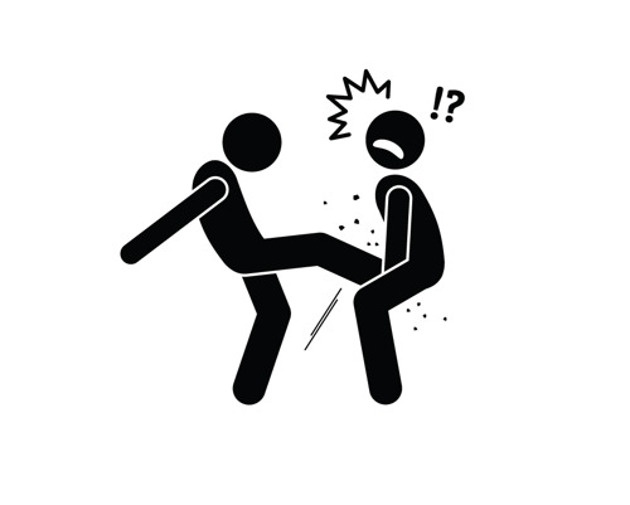
The back elbow can be done off either hand. This is primarily a self defence technique to defend against an opponent standing behind you.
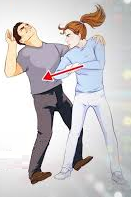
The Upward Knee is one of the most sought after knees to throw during a Muay Thai bout. Most of the time in the clinch your opponent will never allow you to throw it, however if they have a lapse in judgement or are weak in the clinch, take advantage of it and use an Upward Knee. This knee is the main reason why Thai Boxers will keep their hips close to their opponents and their head up high during a clinch. Forget this and give your opponent room and they will finish the fight with an Upward Knee to the head.

Above Daniel "BDK" White throws an Upward Knee toward Harley Osgoods head.
A Palm Slap is an excellent strike to use in self-defence, as it does not carry the same risk of fracturing your hand as a punch does. It takes some time to condition your fist to be able to punch at full power, but a Palm Slap will take little conditioning to be immediately combat ready.
The Palm Slap is also known as Hirate in Japanese (we use English for this particular technique in Black Dragon Kai). The way it is written is as follows
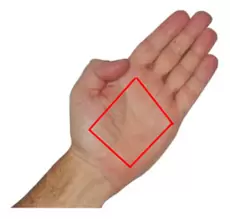
The High Cover defence can be used against a number of different attacks. It provides maximum protection from the front and minimal to the sides. The best thing to do is imagine that High Cover is like a helmet; the snugger the fit the more protection you will have, the looser the fit the more impact you will sustain.

Here is a good example of a High Cover, that successfully defends a jab from Duane "Shadow" Sheppard, during a Foxtel televised match.
The Low Cover defence can be used against a number of different attacks. It provides maximum protection from the front and minimal to the sides. The best thing to do is imagine that Low Cover is like body armour; the tighter your arms are and the stronger your midsection the more protection you will have, the looser the arms and forget to flex your abs the more impact you will sustain.

Notice that this boxer is keeping his Guard up as he defends low punches from his opponent, using the Low Cover.
A Switch is utilised to either change stance or confuse your opponent. This is the fastest footwork you can do to change your stance, should you find yourself the opposite leg forward. Do not jump to switch as this will delay your footwork and warn your opponent that you are changing stance.

Examples of some techniques to use with Switch footwork:
A Pivot is utilised to change the direction of your body as well as change your stance. This footwork can also be taken advantage of against multiple attackers, quickly pivoting and changing between them. Ensure you Pivot swiftly and use the movement of pivoting to gain momentum for your strikes as you land in stance.

Examples of some techniques to use with Pivot footwork:
The Level Change can be used to evade a strike or to set up a takedown. Level changes can also be used as fakes to cause your opponent to react or overreact.
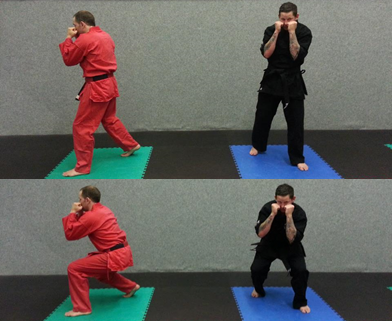
Bouncing on the Spot is also refered to "Hot Tin Roof" reminding students to never stand on the spot for too long, but constantly transfer weight from one foot to the other. Skipping can greatly enhance this footwork skill.
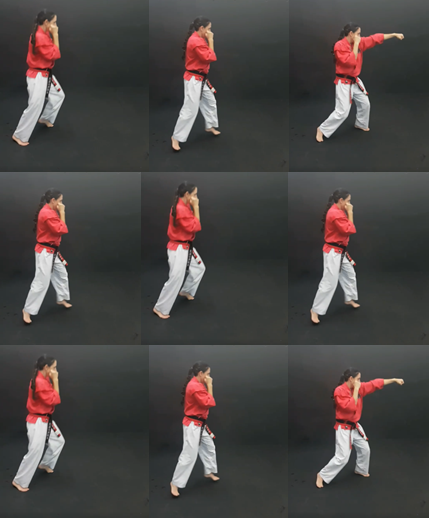
The Sitting Backward Breakfall is an introduction in how to fall safely. Although we do not want to defend ourselves on the ground, it is imperative that we know how to land on the ground safely, so that we may be capable of standing up again. It is also the introduction to a useful safety skill, that will come in handy any time you trip, fall down or fall off something
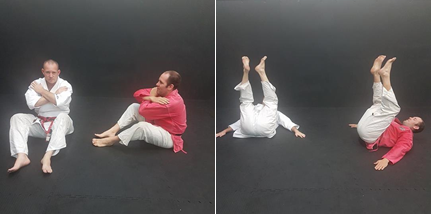
Was this information helpful?